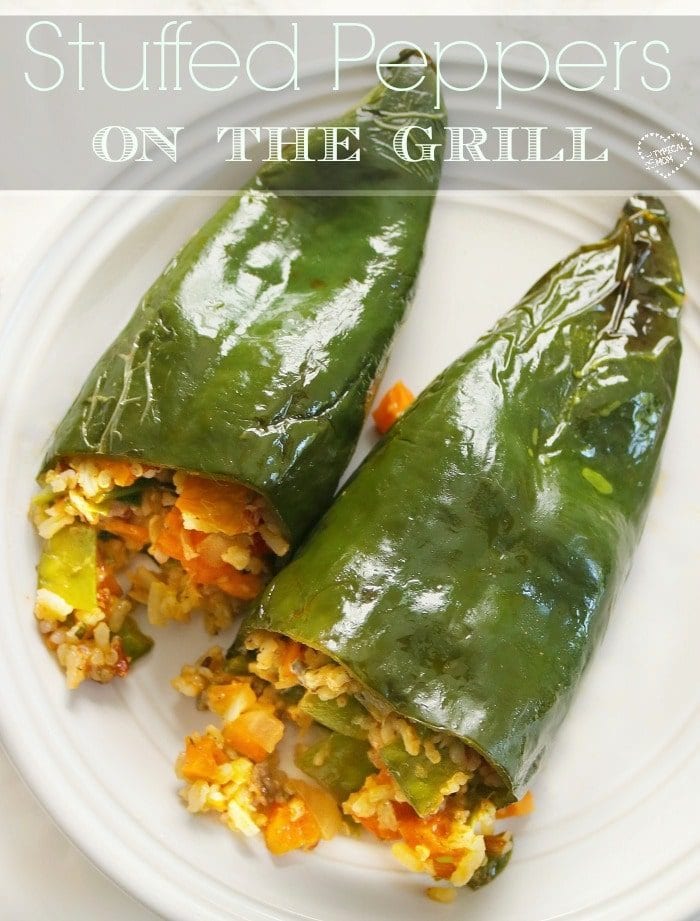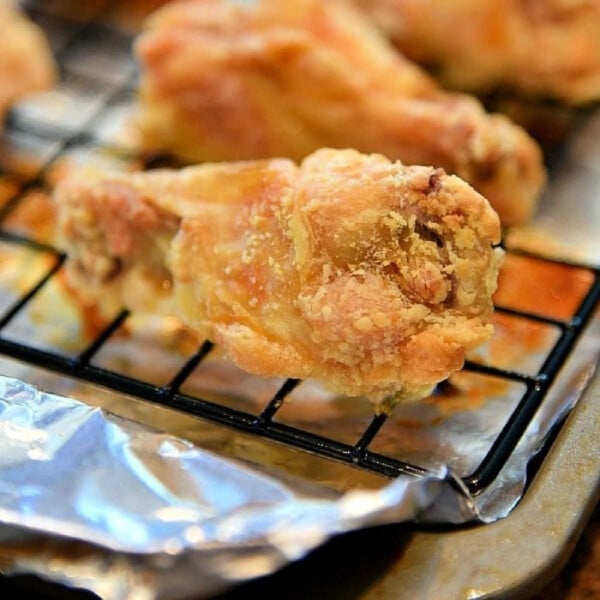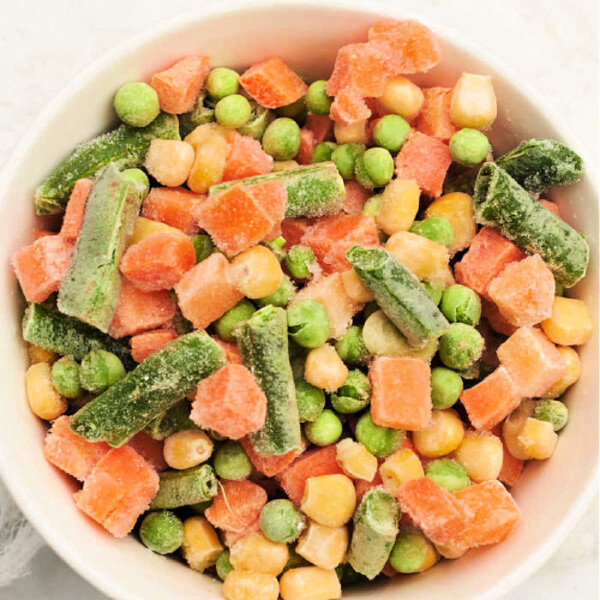What types of green peppers should you use in recipes, their scoville ratings and how to use them in the kitchen to add flavor and some spicy in dishes. There are many beyond bell peppers and roasted jalapenos to choose from.
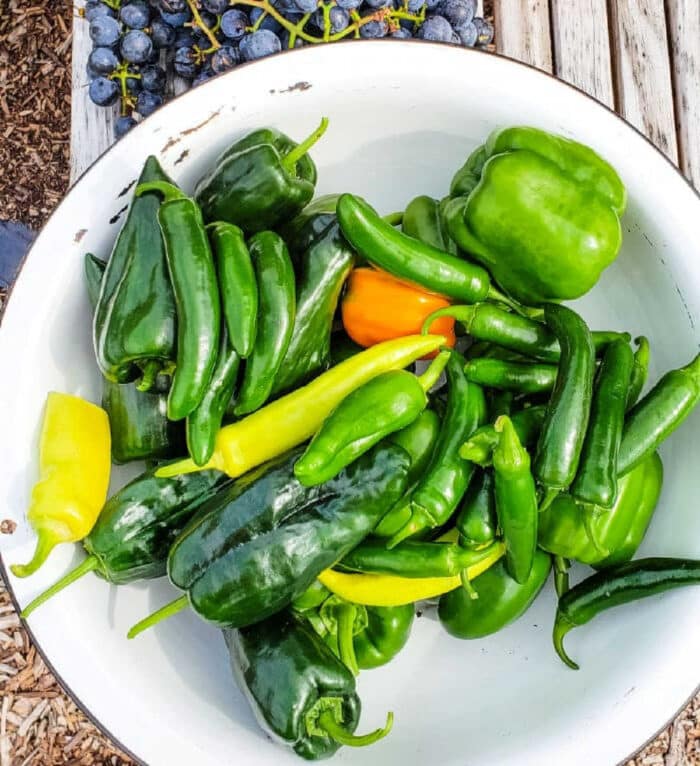
Jump To
- Are all peppers green?
- 8 Types of Green Peppers
- Are Green Peppers Spicy?
- What are the differences between the different colors of bell peppers?
- What to Cook with Bell Peppers
- How can you Tell if a Pepper is Spicy?
- What is the Scoville Rating?
- Unique Ways to Use Peppers
- Poblano Pepper Recipes
- What kind of peppers are long and green?
There are tons of types of green peppers out there and each one has a different heat level and flavor. From small to large like poblanos you can stuff and roast them, blanch bell peppers, add to casseroles for heat and lots more.
Are all peppers green?
No, they are a type of pepper that are characterized by their bell shape, thick flesh, and mild, slightly sweet flavor. They are often used in cooking and can be found in a variety of colors, including green, red, yellow, orange, and even purple.
They are a good source of vitamins C and A, as well as fiber and other nutrients. They can be eaten raw, cooked, or stuffed, and are a popular ingredient in a variety of dishes, such as stir-fries, salads, and soups.
Also a popular ingredient in many ethnic cuisines, including Mexican, Italian, and Greek each color has different flavors. They can be used to add flavor and texture to dishes, and their mild flavor makes them a versatile ingredient that can be combined with many other ingredients. When selecting one, look for firm, smooth textures that are free from soft spots or blemishes. They can be stored in the refrigerator for up to a week.
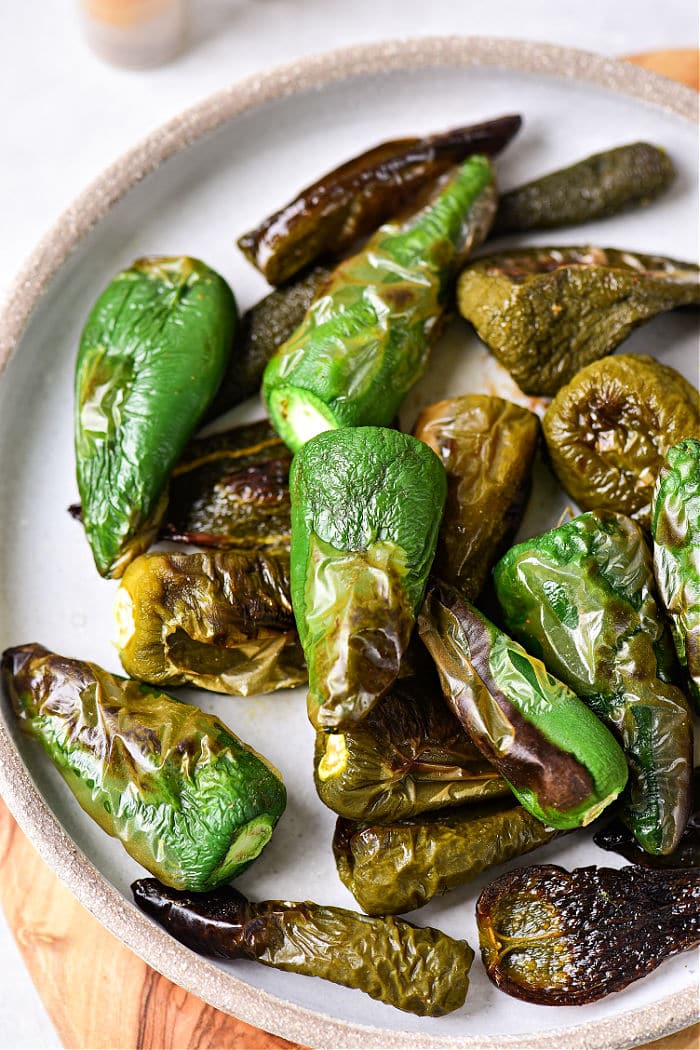
8 Types of Green Peppers
Bell peppers are the most common type of green pepper, which has a bell shape, thick flesh, and a slightly sweet flavor.
- Cubanelle peppers are long and slender, and they have a mild, sweet flavor. They are often used in Italian and Spanish cuisine.
- Poblano peppers are medium-sized and have a slightly spicy flavor. They are often used in Mexican cuisines like our chicken poblano and for making chiles rellenos.
- Anaheim peppers are similar to poblano peppers, but they are slightly hotter. They are often used in Southwestern cuisine, particularly for making chiles rellenos.
- Banana peppers are long and thin, and they have a mild, sweet flavor. They are often used in sandwiches and salads.
- Believe it or not when they are early in the growing season they ARE in fact green, then yellow, then red.
- Jalapeno peppers are small and green, and they are known for their spicy flavor. They are often used in Mexican cuisine, particularly for making salsa and guacamole.
- Serrano peppers are small and green, and they are even hotter than jalapeno peppers. They are often used in Mexican cuisine, particularly for making pico de gallo.
- Thai peppers are small and green, and they are extremely hot. They are often used in Thai cuisine, particularly for making spicy sauces and curries.
These are just a few examples of the many types of bell peppers available, each with its own unique flavor and level of spiciness. Since they are hollow you can fill them with a lot of different things and make a variety of different stuffed bell peppers ideas.

Are Green Peppers Spicy?
Green bell peppers are not spicy, yellow and orange are quite sweet actually. Others this color, in general, are quite mild. However, it’s important to note that there are many different types out there, and some green peppers may have a slightly spicy flavor depending on their variety and level of ripeness.
If you are looking for a spicy type of peppers, you may want to try a jalapeño peppers, serrano, or Thai instead, that are in fact green in color. These peppers are generally hotter than green bells and are commonly used in spicy Asian or Mexican dishes. It’s always a good idea to taste a small piece of a pepper before using it in a recipe to gauge its level of spiciness.
We have used a mixture of mixed, jalapenos, banana, anaheim, serrano, thai chilis to make our green pepper jelly which is totally wonderful. You can cook with it as a sauce, serve on crackers, toast or poured over cream cheese as a popular appetizer.
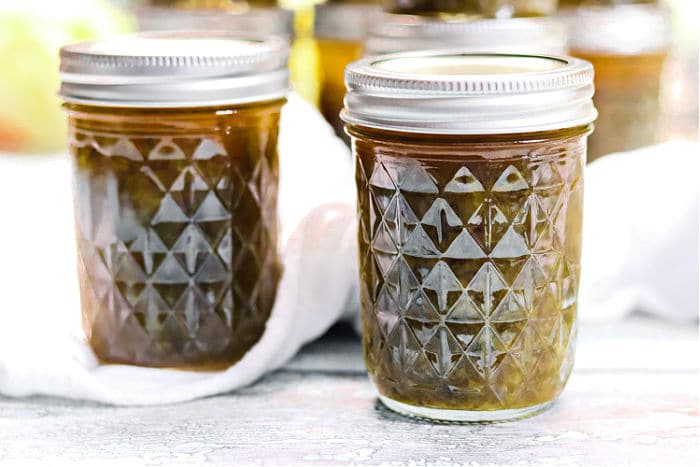
What are the differences between the different colors of bell peppers?
Green bell peppers are typically less sweet than other colors. Red bell peppers are the sweetest and most nutrient-dense of all the colors. Yellow bell peppers are also fully ripe, but they have a slightly milder flavor than red. Orange are a cross between yellow and red.
There are SO many things you can do with these, like seriously. I have a few of them here but if you have something that calls for onions, you could substitute these instead.
What to Cook with Bell Peppers
Crockpot Stuffed Bell Peppers: Cut the top off of the bell pepper and remove the seeds and membrane. Stuff the pepper with a mixture of ground beef, rice, and tomato sauce, and bake in the oven until the pepper is tender.
Instant Pot Fajitas: Cut bell peppers into thin strips and cook them with sliced onions and beef or chicken. Serve with tortillas, guacamole, and sour cream.
Pepper and Onion Air fryer chicken kabobs: You can cut large chunks of any variety of these depending on your heat comfort. This is how to cut bell peppers and onions into large chunks. Thread them onto skewers. Brush with olive oil and grill until tender.
Stir Fry: Cut bell peppers into thin strips and add them to a stir fry with chicken, beef, or tofu. Add other vegetables like broccoli, carrots, and onions. Gazpacho: Blend bell peppers with tomatoes, cucumbers, onions, garlic, and bread to make a cold soup that is perfect for hot summer days.
Bell pepper quiche: Add diced bell peppers to a quiche with cheese, eggs, and cream. Bake in the oven until set.
Roasted Hummus recipe with canned chickpeas: Blend chickpeas, roasted red peppers, garlic, lemon juice, and tahini in a food processor to make a creamy dip that is perfect with pita chips or vegetables.
These are just a few ideas to get you started. Bell peppers can be used in many dishes, so feel free to experiment and find new ways to use them.

How can you Tell if a Pepper is Spicy?
It’s always a good idea to be cautious when trying a new one, especially if you are sensitive to spicy foods. Wear gloves when handling any of them that are hot, and avoid touching your face or eyes after handling them. The amount of seeds inside can tone down the heat too.
Look at it, generally, the smaller and more wrinkled it is, the hotter it is likely to be. However, this is not always a reliable indicator, as some can be deceptively mild.
Smell the pepper: Spicy tend to have a distinct aroma that can be detected when the pepper is cut or bruised. However, the strength of the aroma does not always correlate with the pepper’s level of spiciness.
Taste: The most reliable way to determine if a pepper is spicy is to taste a small piece of it. It’s important to start with a very small piece and gradually increase the amount, as some peppers can be extremely hot. If the pepper has a spicy flavor, it is likely to be hot.
Check the Scoville rating: The scale is a measure of the heat level of peppers, with higher numbers indicating hotter peppers. Some peppers, such as the Carolina Reaper or the Ghost Pepper, which are the hottest peppers, have extremely high points.
You can usually find several varieties at the grocery store. colors mean something too. As they grow and mature many peppers turn red over time which means when they near this deeper shade the sweeter they are becoming.
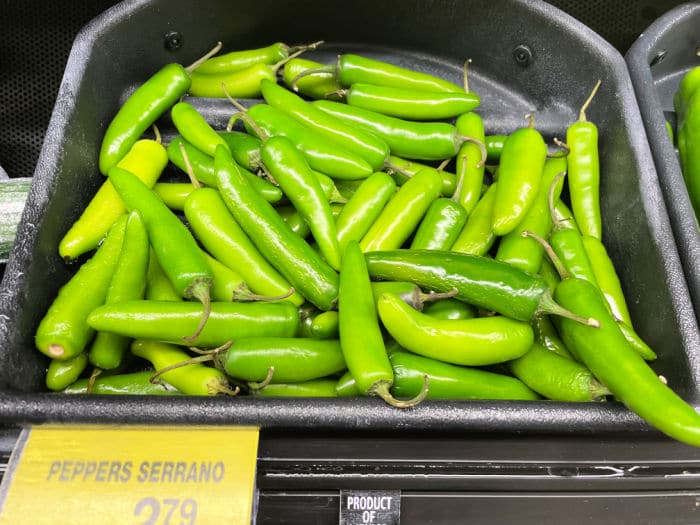
What is the Scoville Rating?
This scale is a measure of the heat level of peppers. It was developed by pharmacist in 1912. It measures the concentration of capsaicin, which is the chemical responsible for the heat. The scoville heat units from 0 (no heat) to over 2 million (extremely hot). Here are some ratings;
- Bell Pepper: 0 shu
- Pimento Pepper: 100-500 shu
- Jalapeno Pepper: 2,500-8,000 shu
- Serrano Pepper: 10,000-23,000 shu
- Cayenne Pepper: 30,000-50,000 shu
- Thai Pepper: 50,000-100,000 shu
- Habanero Pepper: 100,000-350,000 shu
- Ghost Pepper: 1,000,000-1,500,000 shu
- Carolina Reaper: 1,500,000-2,200,000 scoville heat units shu
Unique Ways to Use Peppers
Pizza Topping: Slice and use them as a pizza topping along with other ingredients like sausage, onions, and mushrooms. Sandwich Filling: Add to your favorite sandwich for an extra crunch and flavor.
This is how to pickle vegetables of all kinds: Slice and pack them into a jar with vinegar, sugar, and spices. Let the peppers sit for a few days to pickle, then enjoy as a condiment or snack.
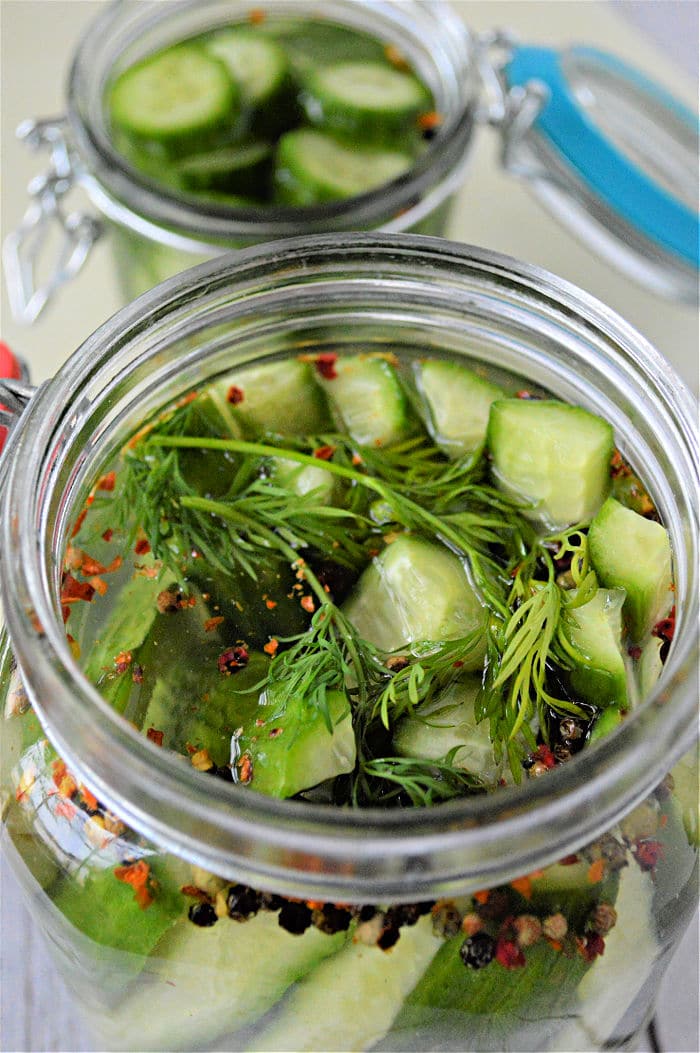
Poblano Pepper Recipes
Poblano peppers are medium-sized, mild chili peppers that are commonly used in Mexican cuisine. Here are some ideas for cooking with poblano peppers: Chiles Rellenos are often used to make these, which are stuffed peppers that are battered and fried. Stuff them with cheese, beef, or chicken for a delicious and filling meal.
Chicken Poblano is made with chicken broth, onion, and garlic to make a creamy and flavorful soup.
Poblano Pepper Tacos are made with sliced spicy peppers sautéd with onions and garlic. You can lessen the heat by removing all of the seeds inside. Serve them in warm tortillas with your favorite taco toppings.
Grilled stuffed peppers are great using these because they are quite large in size leaving a big cavity for rice and ground meat.
What kind of peppers are long and green?
The larger varieties are shown below in this picture. Cubanelle are another that are typically roasted and stuffed but smaller, a cross size between these and jalapenos I guess I would say.
